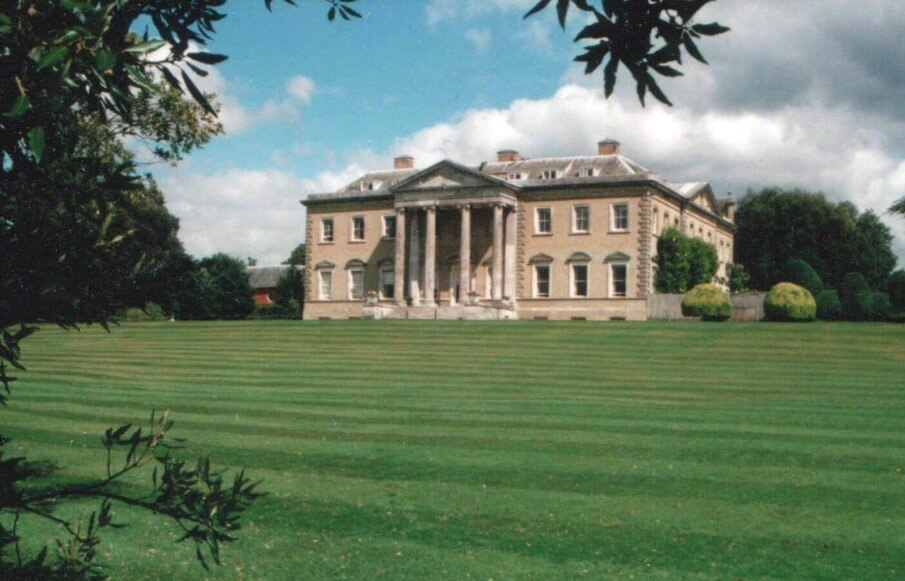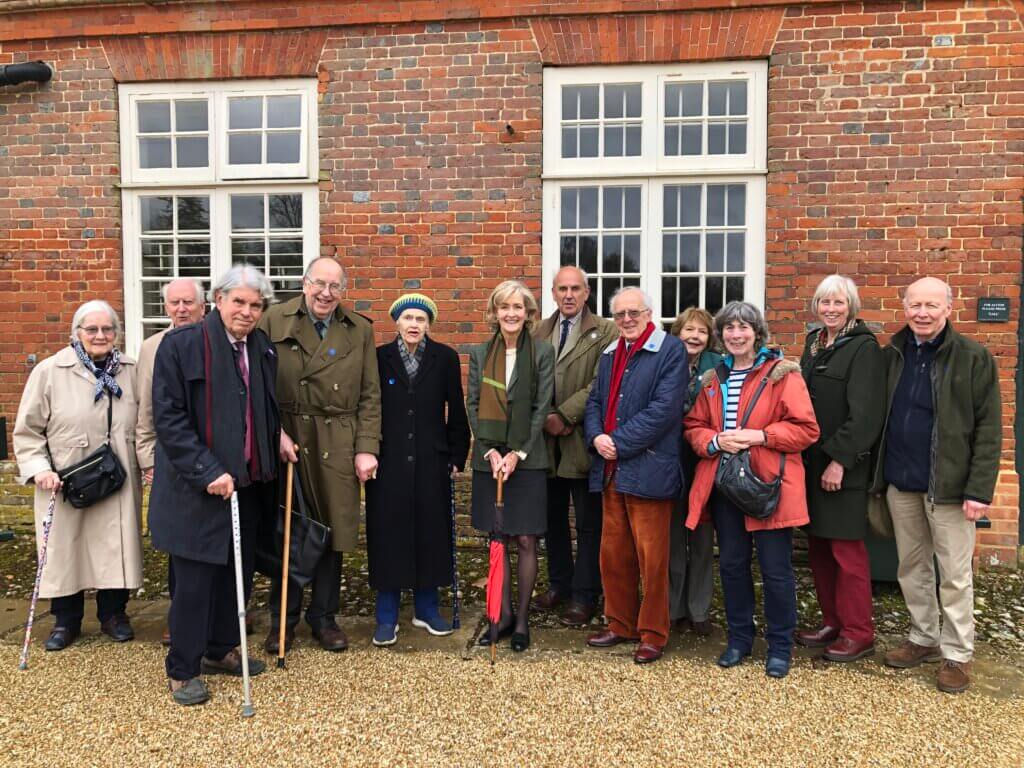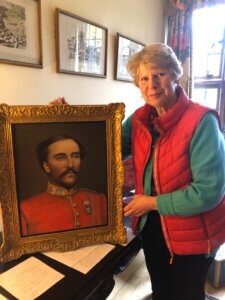29 March 2023
Famous for its links with both Lord Louis Mountbatten (the last Viceroy and first Governor General of India), and with Lord Michael Brabourne (former Governor of Bombay, and of Bengal), Broadlands is a beautiful 18th century building set in rolling Hampshire countryside on the banks of the river Test.

After meeting for lunch at the nearby Bear and Ragged Staff, around 20 BACSA members recently spent a very pleasant afternoon on a guided tour of the house, followed by tea (and a fascinating Kashmir Gate memoir) at the home of local member Sarah Saunders-Davies.
Originally part of the estate of Romsey Abbey, the Broadlands manor became privately owned in 1547, after the Dissolution of the Monasteries. It changed hands several times before Henry Temple, 1st Viscount Palmerston, initiated the architectural transformation of the house and gardens carried out by Henry Holland and Capability Brown in 1736. The stunning views that we see today – the Palladian-style house frontage and the informal ‘broad lands’ sloping down to the River Test – are the result of their work.
In 1939 the estate was inherited by Edwina Ashley, who had married Lord Louis Mountbatten in 1922. As Supreme Allied Commander South East Asia Command, Lord Louis oversaw the recapture of Burma and Singapore from the Japanese, and was created Earl Mountbatten of Burma in 1947. The last Viceroy of India, he oversaw the Partition of India into India and Pakistan, before serving as the first Governor-General of India until June 1948.
The Mountbattens’ elder daughter Patricia married John Knatchbull in 1946. John’s father Michael, Lord Brabourne, had served as Governor of Bombay from 1933-1937 (during which time he laid the foundation stone for the Brabourne Stadium cricket ground), and then as Governor of Bengal (in which capacity, for example, he opened the kindergarten for Dr Graham’s Homes at Kalimpong). He died in 1939, and was buried at St John’s Churchyard, Kolkata.

The present Countess Mountbatten welcomed us to Broadlands, her home, and thanked BACSA for the work being carried out at cemeteries in South Asia. Richard Jordan-Baker, Estates Director, gave us a general introduction to the history of Broadlands, and the Mountbatten family. The friendly, very knowledgeable estate guides then showed us round the rooms open to the public, which contain a treasure trove of Italian artworks collected on 18th century Grand Tours by the youthful Palmerstons; family portraits over the centuries (including members of several European royal families related to the Mountbattens); period furniture, and all kinds of family memorabilia – ranging from antique perambulators and a display of models of the ships on which Lord Louis Mountbatten served to the Japanese swords surrendered at the end of World War II.
After leaving Broadlands we were kindly invited to afternoon tea by BACSA member Sarah Saunders-Davies, who lives nearby. Sarah is a great, great niece of Col Danvers Osborn (1827- 1898), an Adjutant in the 54th Native Infantry who had an ‘almost miraculous escape from death’ after being ‘treated to a bullet in the side’ at Kashmir Gate, Delhi, in the May 1857 rebellion.

Standing by his portrait, Sarah recounted the extraordinary story of the badly wounded Osborn’s week-long journey to the Artillery hospital in Meerut, some 30 miles from Delhi. He lost one Wellington boot while wading across the river Jumna, and had to continue without it. After the first 10 miles he was in such pain from his bullet wound that ‘I could hardly hobble, much less accompany my companions on their way’.
The group decided to leave him in a concealed position, from where he could, hopefully, later be rescued in a doolie. They included Lieutenant George Willoughby, Commissary of Ordnance, who had ordered the explosion of the British Magazine at Delhi (to prevent the contents from falling into enemy hands). In the event they had barely gone 3 miles when they themselves were attacked and killed. As Osborn put it: ‘Truly my escape from death was wonderful, and the wound which brought me low ultimately proved my salvation’.
Discovered by a goatherd, he was given food, water and shelter by a group of sympathetic villagers, who eventually carried him the remaining distance to Meerut under cover of darkness. At the Artillery hospital he received ‘every care and attention’, which enabled him to ‘take the field… within a few weeks’. He lived for another 40 years, dying in Brussels in 1898.
All in all, a fascinating day, which showed how involvement with BACSA can open up a variety of historical experiences. Our thanks are due to Countess Mountbatten, to Richard Jordan Baker and to Cedric and his team for looking after us at Broadlands. And to BACSA members Meryl Balchin (especially for her help with transporting Winchester train travellers), Sarah Saunders-Davies, and Rosemary Raza, for organising such a memorable trip.
Rachel Magowan
